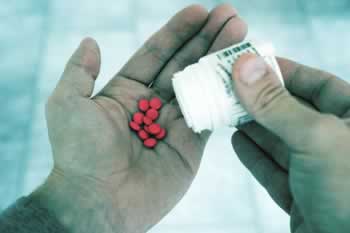
The generic drug industry faces significant challenges, including unstable economics, supply chain disruptions, and intense competition. To remain competitive and profitable, generic drug manufacturers must adopt innovative strategies to optimize their manufacturing processes. This article explores the key approaches to improve efficiency, reduce costs, and enhance the overall sustainability of generic drug manufacturing.
The Role of Digital Transformation
Digital transformation is a crucial element in optimizing generic drug manufacturing. By leveraging computer modeling and simulation (CM&S) tools, drug developers can significantly improve equipment design, production efficiency, and overall competitiveness. CM&S enables pharmaceutical companies to transform drug manufacturing from production to packaging, reducing the need for physical testing and minimizing waste.
Strategies for Success
Develop Higher-Value Generics: Instead of focusing on identical generic products, invest in innovation to create differentiated, high-value products. This approach can help generic manufacturers break the cycle of downward profitability and growth.
Portfolio Management and Differentiation: Generic drug manufacturers should center their strategies on meeting the needs of a rapidly changing healthcare system and evolving medical science. This involves portfolio management, strategic scaling, and supply chain investment to create value through differentiation.
Invest in Manufacturing and Supply Chain Transformation: Drug manufacturers should invest in manufacturing and supply chain transformation to drive efficiency and reliability. This includes developing more reliable multisourcing programs, establishing partnerships with aligned incentives, and exploring domestic manufacturing options.
Restricted Market Entry and Long-Term Contracting: Restricting market entry and using long-term contracts can bring greater transparency to the generics market, attracting more manufacturers to remain as suppliers. This approach can help stabilize the market and reduce price volatility.
Create a Futures Market: Establishing a futures market for generic drugs can help manufacturers predict demand, create greater transparency about prices, and reduce long-term financial volatility.
Challenges and Opportunities
The generics industry faces significant challenges, including patent expirations, supply chain disruptions, and intense competition. However, these challenges also present opportunities for innovation and growth. By adopting the strategies outlined above, generic drug manufacturers can optimize their manufacturing processes, improve efficiency, and enhance their competitiveness in the market.
Conclusion
Optimizing generic drug manufacturing requires a multifaceted approach that incorporates digital transformation, innovative product development, and strategic supply chain management. By adopting these strategies, generic drug manufacturers can improve their competitiveness, reduce costs, and enhance the overall sustainability of their operations.
“By carefully managing COGS, generic drug companies can improve their competitiveness dramatically.” – BCG
References
- Ansys. (n.d.). Optimize Drug Manufacturing with Digital Transformation. Retrieved from https://www.ansys.com/campaigns/drug-manufacturing
- KPMG. (2023). Generics 2030: Three strategies to curb the downward spiral. Retrieved from https://kpmg.com/us/en/articles/2023/generics-2030-curb-downward-spiral.html
- Schulman, K. A. (2015). Options to Promote Competitive Generics Markets in the United States. JAMA, 314(14), 1469–1470. doi: 10.1001/jama.2015.13498
- KPMG. (2022). Maximizing the potential of your generic portfolio strategy. Retrieved from https://kpmg.com/kpmg-us/content/dam/kpmg/pdf/2022/maximising-potential-of-your-generic-portfolio-strategy.pdf
- BCG. (2019). Getting a Grip on COGS in Generic Drugs. Retrieved from https://www.bcg.com/publications/2019/getting-a-grip-on-cogs-in-generic-drugs























